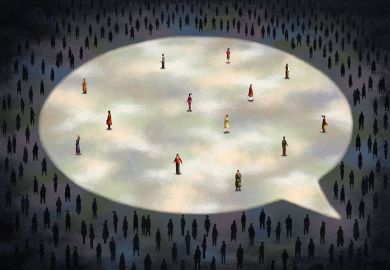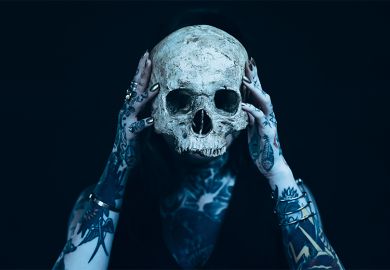Christopher Bigsby is, as The Boston Globe recently commented, something of a Boswell to Arthur Miller's Johnson, and his critical study arrives as a timely summing-up and celebration of the playwright's oeuvre. Covering the works in chronological order, including stories, novels and unpublished typescripts, Bigsby draws not only on cancelled drafts, notebooks and manuscript material, but also on his own interviews and conversations with the author. Bigsby's accumulated knowledge is immense, and he often uses it with great subtlety and deftness, comparing variant versions to illuminate the significance of individual lines or interweaving details of productions to highlight ambiguities and complexities.
His primary method is character-based analysis allied to plot synopsis, a self-consciously traditional approach that renders his writing accessible and enjoyable. Indeed, he saves a sideswipe in his concluding chapter for critical theory - "that sometimes gnomic and self-referring language of academe, so opaque beyond the confines of the campus".
A short biographical synopsis concludes each chapter and links to the next text to be analysed. Connections are duly noted, but Miller's life is not the lens through which his art is to be viewed. Rather, Bigsby follows the method of Miller's autobiography, Timebends , not seeking to plumb psychological or emotional depths, but placing each work in a political and historical context so that the rigour and urgency of Miller's stubbornly oppositional voice becomes clear.
The Crucible as riposte to the House Un-American Activities Committee is a critical cliche, but by placing The Price against the culture of denial that perpetuated the Vietnam War, or Resurrection Blues beside the anaesthetising paradoxes of reality TV, Bigsby emphasises Miller's continuing ethical engagement. Indeed, Bigsby offers his own pungent comments on contemporary American politics, and at its best his writing goes energetically beyond literary analysis. Discoursing on media-filtered culture, he comments on the notorious acquittal of police officers filmed assaulting a black man: "Vicarious pleasure was available in complete safety and with the press of a button on a remote control, remote, too, from the reality of the event thus instantaneously translated into fragmented images and soundbites. Rodney King was repeatedly beaten not only by police officers but also by the television stations, which, like the attorneys later defending the accused, replayed the scene so many times that it ultimately seemed to be drained not only of pain but also of any sense of the real. After a time the action became balletic, a choreography to be deconstructed by lawyers who thus became critics, as ethics turned into aesthetics."
Bigsby sets out to refute two particular critical models: that Miller's playwriting career tailed off into lesser and more uneven works after A View from the Bridge ; and that, as a Jewish writer, he failed to engage fully with his roots and the traumas of his people, a view put forward most recently in Martin Gottfried's biography of Miller.
By emphasising Miller's experiments with theatrical reality, from the psychological dreamscape that interlaces the realism of Death of a Salesman to the layered complexities of memory and fantasy in Mr Peters' Connections , Bigsby offers an alternative model of Miller's development, in which stylistic innovation runs throughout his work and in which the Ibsenite naturalism of All My Sons was the exception rather than the rule.
Bigsby insists that, far from belatedly recognising his Jewish heritage, Miller confronted anti-Semitism and the horrors of the Holocaust as no other playwright, Jewish or not, has done, right from his study of American prejudice in his first novel, Focus , through to the plays that chronicle the horrors of the death camps and the struggle to retain faith in human morality in their aftermath.
It is hard to argue with a critic who not only quotes innumerable interviews and personal conversations with the author, but also claims credit for the title of Miller's Two-Way Mirror and for BBC radio's decision to produce The Golden Years . But Bigsby renders this difficulty considerably greater by offering only minimal footnoting and no bibliography, so readers are asked to accept his authority with no possibility of testing his conclusions against the available evidence.
However steeped in knowledge of Miller's work, published and unpublished, Bigsby's book is of limited use to students wishing to follow any leads for further research. His study embraces the general reader but seems deliberately to frustrate the curious scholar.
His determination to defend Miller against all criticism also leads him into occasional contradictions and inconsistencies. Having noted that Miller's adaptation of An Enemy of the People idealises Ibsen's hero, toning down his megalomania and consequent moral ambiguity, Bigsby concludes that "in many ways Miller improves on the original". Yet when discussing the two free adaptations of The Crucible by Jean-Paul Sartre and Marcel Aymée, Bigsby can barely contain his vitriol at their presumption.
He positively ties himself in knots over the accusation that After the Fall is Miller's self-vindication in the face of the suicide of Marilyn Monroe, to whom Miller was married; he insists that the play is not self-servingly autobiographical, but rather that, with courageous honesty, Miller is examining moral culpability using his own life as exemplum - an argument that he does not even try to square with Miller's repeated and disingenuous denial that the play reflected his own life. Bigsby also has a critical blind spot for Samuel Beckett, offering him as reductionist and defeatist in contrast to Miller's defiant belief in individual agency. At one point he describes Incident at Vichy as " Waiting for Godot with man as his own Godot", which suggests that Bigsby, unlike Beckett, knows who Godot is and knows that he is not human.
Such vehement partisanship is not necessary, for Bigsby's more measured analysis has already ably demonstrated why Miller's voice was one of the most vibrant, urgent and arresting of the modern theatre.
Sos Eltis is fellow and tutor in English, Brasenose College, Oxford.
Arthur Miller: A Critical Study
Author - Christopher Bigsby
Publisher - Cambridge University Press
Pages - 514
Price - £60.00 and £19.99
ISBN - 0 521 84416 9 and 0 521 60553 9



